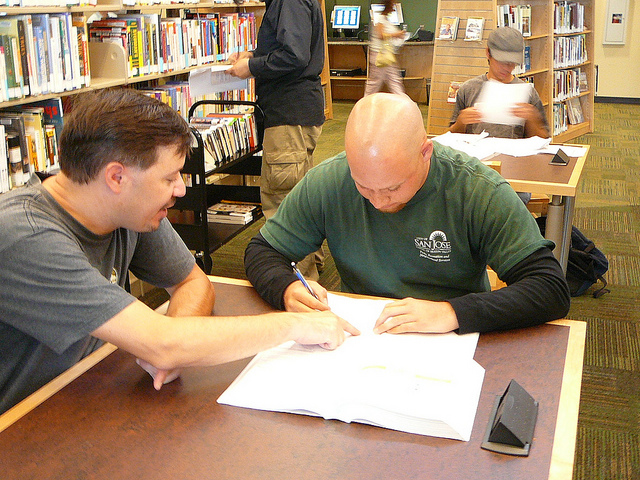Tips for TEFL tutoring one-on-one
Many teachers will opt to subsidise their ex-pat living with a little extra TEFL tutoring on the side. Others will need to do one-on-one lessons as part of their job, to help struggling students get a handle on target language, complex grammar, vocabulary and the like. But whether you’re doing casual conversation lessons in a café, or formal individual classes in preparation for a Cambridge exam, there’s no question that one-on-one teaching is a different kettle of fish. Check out this list of top tips for hitting the classroom with a solo student, which looks at everything from student talk time to local trends and cultures.

Don’t forget that student talk time (STT)
Loads of schools around the planet will put a heavy emphasis on maximising STT during lesson time. In groups, it’s considered the holy grail of lesson planning, allowing your class to practice and implement the target language immediately after learning it, all whilst recapping on a host of other grammatical and vocabulary-pushing skills. Well, the story’s no different when TEFL tutoring one-on-one, only it can be harder for the teacher to remember that! When a conversation is between just two, then it’s easy for each to talk 50% of the time. But when it comes to tutoring English, it’s better to have a ratio of 70% to 30% in favor of the student. Be sure to force yourself to slow down and give the pupil time to speak!

Try to set clear learning targets
It’s a great idea to set out clear learning targets in any classroom, whether that’s one-on-one TEFL tutoring or large lectures and group classes. However, for individuals, it’s really important that they leave the school, or café, or wherever it is you’re teaching, with a definite idea of what they’ve learned and how to practice it. This will help to set your lessons apart from simple conversational sessions, and will ensure the pupil feels they are getting value for money (TEFL is a business after all!). It will also help with your own lesson plans, giving you a clear objective and direction to each activity.
Make sure you know what the student wants
We all know the adage: the customer’s always right. Well, while that’s not entirely true in the world of EFL language – particularly when it comes to separating gerunds from infinitives, and the past participle from past tenses – it is true for one-on-one students who know precisely what it is they want to get better at and practice. There’s a simple way of dealing with this: use your first one-on-one session together to chat about the things your student finds difficult and understand the reasons why they’ve opted for extra tuition. Then, you can focus lesson plans to hone in on particular skillsets and topic areas.

Know the local climate and the person
This is a tip that concerns almost all areas of teaching. Being sensitive to the ins and outs of the local culture is a must when it comes to entering the classroom abroad. In some countries it’s not acceptable for a male to teach a class of females, for example. In others, covering the hair is a sign of respect. In others, you wouldn’t want to talk about history or sport – you’d be surprised just how seriously it’s taken in some spots around the globe. One-on-one tutoring is no different, only it has the added pressures of getting to know an individual person too. You’ll soon pick up clues to the student you’re working with, see what makes them tick, what subjects they like and more; all stuff to help you keep them engaged and maintain concentration in class. Oh yea, and it’s absolutely essential to check if your style of one-to-one tutoring is okay in your chosen destination. (In South Korea for example, doing extra-curricular lessons is technically illegal, and could incur the wrath of the so-called ‘Language Police’!)
Repetition in key with one-on-one TEFL tutoring
Every qualified TEFL teacher knows just how important it is to recap on previous target language. Individual tutoring is the same – in fact, it’s arguably even more central in the absence of other students to help touch on past topics during that all-important STT. Be sure to kick-off lessons with a short conversational session to build rapport, and try to work in some repetitions of the previous week’s target language or target grammar. You can either do this surreptitiously by planning a chat with particular sentence types or tenses in it, or by actively focusing on it and asking direct questions.
Have you got any more tips for TEFL tutoring one-on-one? Or, are you eager to hit the classroom and ready to work towards that TEFL qualification? Be sure to leave us a comment or check out our placements around the globe.

